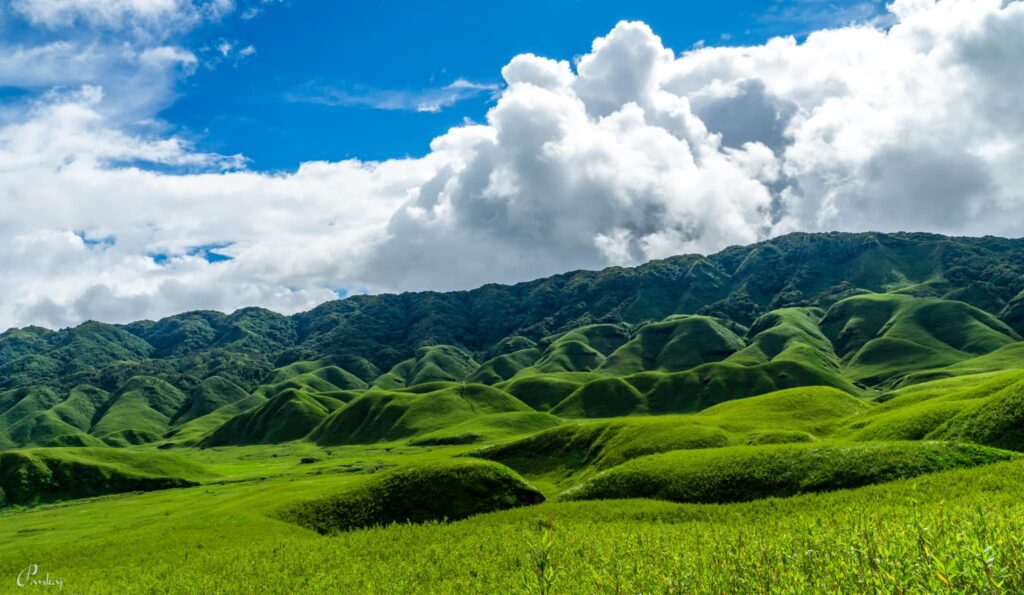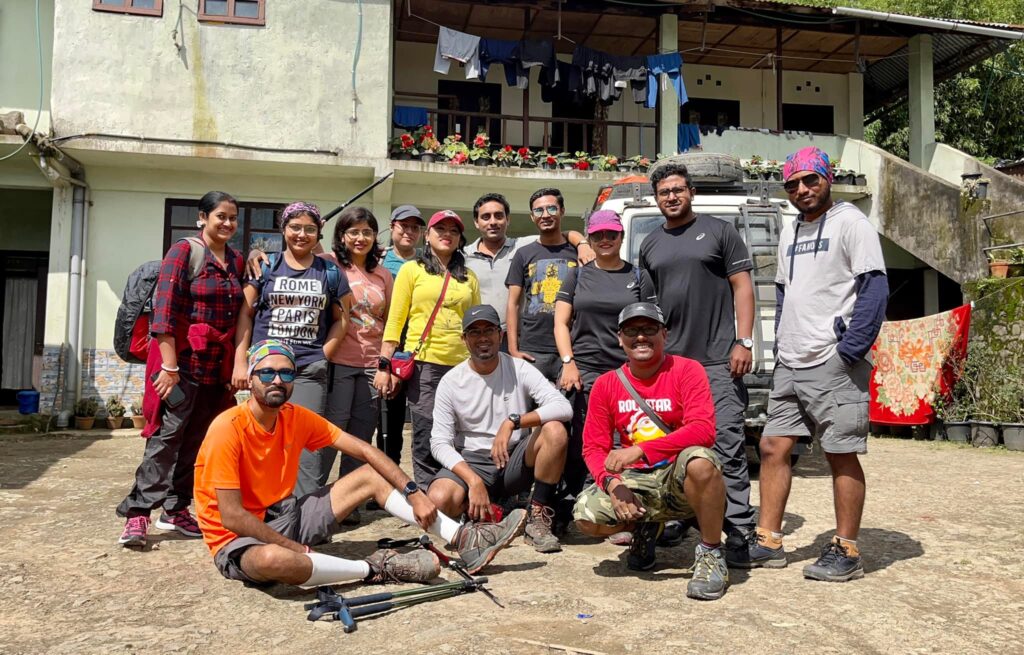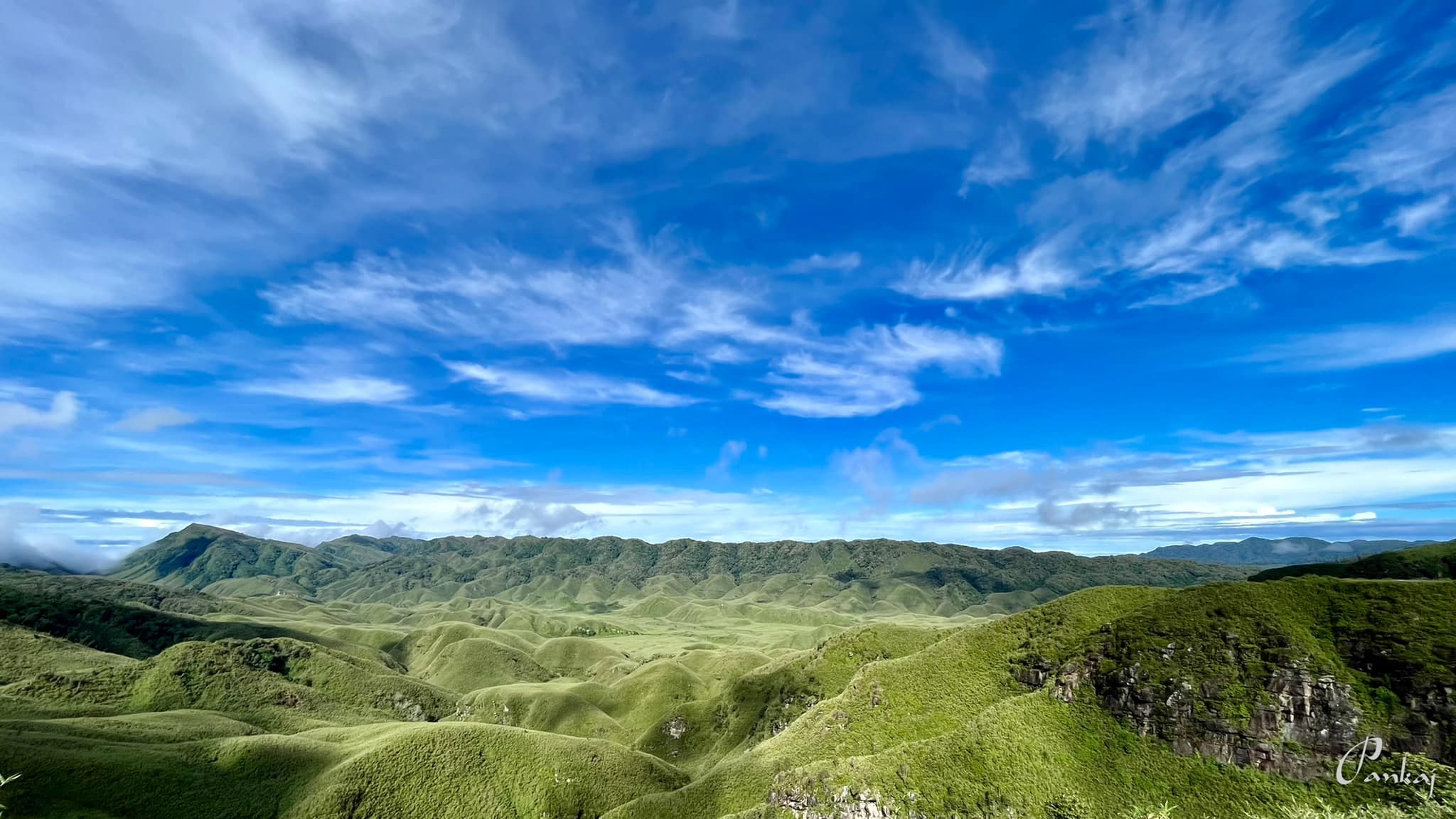Adventure seekers, thrill chasers, and nature enthusiasts have you ever heard about the Dzukou Valley located in the state of Nagaland, India? Often referred to as the ‘Valley of Celestial Charm,’ Dzukou offers a breathtakingly beautiful trekking experience that will leave you in awe. The valley, a relatively new trekking route, provides a unique, untamed, and pristine landscape that is a treat for every nature lover. Last year, in 2022, I embarked on this journey, marking my first-ever trek, and boy, was it an unforgettable adventure!
The Importance of Preparation for a Monsoon Trek
Before we dive into the trek’s nitty-gritty details, let me impart a crucial lesson I learned: preparedness. Monsoon treks can be incredibly exhilarating but equally challenging, thanks to the unpredictability of the weather. Imagine the pouring rain, thick fog, and slippery trails — sounds adventurous, right? That’s what makes trekking in Dzukou Valley during monsoons an unmatched experience.
The Necessities to Pack for the Trek
But remember, your adventure lies in the heart of nature, far from modern comforts. So, pack smart! Carry everything essential for survival: ready-to-eat food, plenty of water, sturdy trekking shoes, waterproof clothing, sleeping bags, rain covers, and an extra set of clothes. And a pro tip — don’t forget those zip ties or rubber bands. They can come in handy in unexpected situations like an abrupt shoe breakdown!
A Detailed Day-wise Itinerary of the Dzukou Valley Trek
Let’s dive into the daily highlights of this trek, from the moment we set foot in Nagaland until the moment we bid farewell to the mesmerizing Dzukou Valley.
Day 1: Embarking on the Adventure
Our adventure commenced in the City of Joy, Kolkata. From here, we flew to Dimapur Airport, Nagaland’s gateway. Upon landing, we were greeted by our travel agency’s representatives, who led us to a cab waiting to whisk us off to Jakhama, a small village near Kohima.
First Impressions: Dimapur Airport and Jakhama
We reached Dimapur around 1:00 PM, under a clear sky that soon gave way to a typical monsoon shower. Our journey to Jakhama was filled with anticipation, chatter, and rain-drenched landscapes that painted a beautiful canvas. We reached Jakhama by 4:30 PM, just as the heavens opened up for a delightful shower. That night, rain on the roofs lullabied us to sleep.
Day 2: Diving Deep into the Valley
The actual trek commenced on Day 2. A brief drive took us to the trek’s starting point. Despite a late start at around 11:40 AM, the spirit was high, and the excitement was palpable.
Trails, Challenges, and Serene Nature
Initially, the trail was steep and quite muddy, reminding us of the challenges the monsoons had in store. This stretch requires extra caution as the slick mud makes it easy to slip and fall. Despite the challenges, the surrounding beauty was an incredible morale booster. We reached the valley around 1:50 PM, the perfect time for a lunch break amidst nature.
Famous Spider Wall and Shoe Breakdowns
Before reaching the valley, we encountered the famous Spider Wall of Dzukou Valley — a sight to behold! Interestingly, this day also saw some shoe casualties. As strange as it may sound, having a pair of good-quality shoes is vital. And if they betray you mid-way, as with two of our team members, those zip ties or rubber bands become your savior.
Journey to the Campsite: A Realization of Wilderness
After lunch, we continued our journey, reaching the campsite around 6:30 PM. The trek may have been short, but the muddy terrain and unexpected delays made it an excellent seven-hour walk. You might complete it in six hours if you’re steady and fast.
Our first encounter with the campsite was a reality check. The dormitories were not the cleanest, and yes, be prepared for a few rodent roommates. We were advised to bring sleeping bags, and now we understand why. There was an option of a homestay with rooms and attached toilets, but they needed a cleaner. The lack of running water made us appreciate our city’s lives more.
Day 3: Exploring the Beautiful Dzukou Valley
Waking up in the wilderness has its charm. The third day was dedicated to exploring the beauty that Dzukou Valley beholds. The white cross on the valley was our target destination.

Sightseeing Highlights and Important Tips
The journey was thrilling, with small river crossings that required us to remove our shoes. The valley was filled with bamboo trees, providing a green blanket over the landscape. Remember to wear a full-sleeve outfit to avoid scratches from the bamboo leaves.
The Return to the Campsite
Upon reaching the white cross by 1:00 PM, we spent time soaking in the panoramic views and capturing memories with our cameras. The return journey offered another highlight — a trip through an intriguing cave trail. This route was challenging and required us to crawl through certain areas, but it was an exciting detour before we reached our campsite at 4:30 PM.
Day 4: Wrapping Up the Trek
We descended at 9:00 AM on the final day under a clear sky. Walking was faster as it wasn’t raining, and by 12:00 PM, we were at the end of the valley. After a small lunch, we navigated through the forest, crossed the Spider Wall again, and returned to the bottom by 1:00 PM. A cab ride later, we were back at our homestay in Jakhama, feeling accomplished and in awe of the journey we had just undertaken.

Post-Trek Reflections and Precautions for New Trekkers
Looking back at my first trekking experience, I realize it was a mix of thrill, adventure, and unforeseen challenges. But these unexpected situations made this journey even more memorable and taught us invaluable lessons about survival, endurance, and adaptability.
For those planning your first trek to Dzukou Valley, here are a few words of advice — start early, double-check your gear, wear suitable clothing, brace yourself for basic accommodation facilities, and carry enough water.
Conclusion
So, that’s a wrap on my unforgettable journey through Dzukou Valley. A trek that started as a thrilling adventure but ended up being so much more — a lesson in survival, a testament to endurance, and a discovery of sheer, unadulterated beauty.
Frequently Asked Questions (FAQs)
What is the best time to trek Dzukou Valley?
The best time to trek Dzukou Valley is during the monsoon season, from June to September. This is when the valley is in full bloom, and the landscape looks extraordinarily beautiful.
What kind of gear should I bring for the Dzukou Valley Trek?
You should bring sturdy trekking shoes, a good quality backpack, waterproof clothing, a sleeping bag, a rain cover, and enough ready-to-eat food and water. Remember to carry a couple of zip ties or large rubber bands!
Is Dzukou Valley Trek suitable for beginners?
Yes, the Dzukou Valley trek is ideal for beginners. The trail is relatively easy, but the monsoon weather can make it slightly tricky. So, as long as you’re physically fit and mentally prepared, you should be able to complete this trek without any significant issues.
How can I reach Dzukou Valley?
You can reach Dzukou Valley by air or train. The nearest airport is in Dimapur, Nagaland, and the closest railway station is in Dimapur too. From there, you can take a cab to Kohima, and from Kohima, another taxi to Jakhama village, which is the starting point of the trek.
What should I keep in mind regarding accommodation in Dzukou Valley?
You should be prepared for basic and not-so-clean accommodation facilities in Dzukou Valley. It’s best to carry your sleeping bag. Also, there may not be running water, so be prepared for that scenario.






